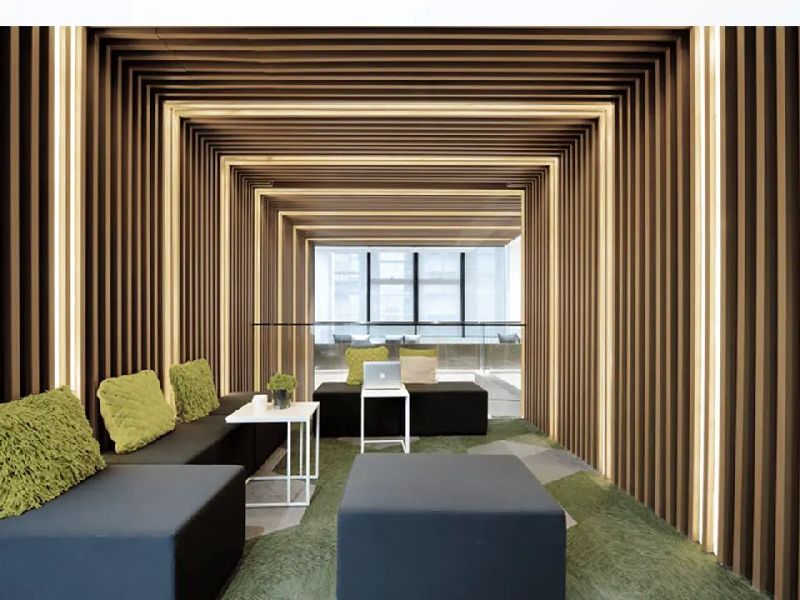When it comes to art, creativity has no boundaries. Artists are seen looking for new materials and methods to express their creativity. Charcoal panels are one such medium that evolved and still holds the attention of both viewers and artists. They are made from burnt wood and they have been used as an artistic material since very long. Ancient cave drawings were made from the charcoal. In today’s world Charcoal panels provide artists with a lasting canvas for their expression because of their unique look, long history and multiple uses. Charcoal panels are gaining popularity in interior design, particularly for walls.
Charcoal panels come in two main varieties:
1. Decorative Panels: Decorative panels are versatile pieces of art and different designing element which reach the boundary of culture and When time. These panels are made spending a lot of time and useful design. They can be made from materials like wood, metal, stone and glass. They come in a charcoal gray color and have and design to make it more attractive. Newer technologies like 3D printing and laser cutting have increased the amount of magnificent modifications and detailing that is possible. Now days decorative panels are gaining a lot of popularities in the field of interior designing. Charcoal decorative panels can be used to show ones creativity in designing. We can use these for a variety of interior design style as they come in a variety of colour options and shadow variations.
2. Composite panels: Composite panels represent a modern and versatile solution for artists looking for a stable and durable solution for their artworks. Artists are offered a reliable canvas to explore their imagination and bring their artistic vision to real life. Composite panels impress the artist with their reliable function, flexibility and best quality by which they can discover and experiment with new forms of art. The composite panels ensure consistent performance and are easy to handle.

Charcoal panels are not only about stylish looks they can improve your environment in a variety of ways.
Charcoal panels are frequently used to create gorgeous accent walls that give bathrooms, bedrooms, and living spaces more depth and drama. Beyond aesthetics, charcoal panels provide useful advantages such, in particular situations, thermal and acoustic insulation, which can enhance energy efficiency and noise reduction. Some varieties can also serve as air purifiers, improving the quality of the air within buildings. Their adaptability to furniture accents, business areas, and ventilation systems makes them a popular option for creating a sleek and contemporary aesthetic with the possibility for practical benefits.
Here are some primary uses of charcoal panels:
Interior Design and Decoration: Wall Paneling: It is used to design accent walls as they give space depth and charm. The charcoal panel provides advantages if we use them in Bedrooms, living rooms, corridors and even restrooms.
TV Backdrops: Charcoal Panels can be used behind a TV to create a stylish look and eye catchy.
Furniture Accents: Charcoal Panels can be used to add a little drama and attractiveness to furniture pieces like headboards, cupboards etc.
Commercial spaces: They can be used in offices, restaurants and other retail stores to create a unique and stylish look.
Louvers and ventilation system: In several commercial and industrial settings, PVC Charcoal louver panels are used for air control and ventilation. It not only makes the look stylish but also makes the environment fresh and clean which positively makes our mood great and delightful.
Now that we’ve talked about its uses let’s have a look at its advantages:
Durability: Charcoal panel which are made from PVC or engineered wood offers durability. They are moisture resistant which makes them last longer and are scratch and dampness resistant as well. As they are made from dark colours they efficiently hide dust and dirt so it needs little cleaning only.
Versatility and style: We can get a variety of charcoal panels of different materials, textures and finishes. Due to this, we will get a variety of options. Also, artists can experiment with a wide range of techniques and styles.
Cost-effectiveness: Charcoal panels, especially PVC variations can be a more affordable option as they come in a low price in comparison to others like wood and stone. The price varies depending on the type of material and quality. You can enjoy the luxurious look without spending a lot of budget.
Soundproofing and Noise Absorption: Charcoal panels control noise pollution by reducing sound waves, particularly from rough surfaces. This helps in bringing calmness in the busy environment like living room, home offices etc.
Though Charcoal Panels have a lot of advantages it has some disadvantages as well:
Light absorption: Charcoal Panel’s major disadvantage is they absorb light which leads to the impression of darker and smaller rooms, especially in a room with little natural light. Due to this, careful consideration of the placement of lights should be made.
Cost: Charcoal panels are quite expensive than that typical paper or canvas as they are made from highly quality material. This can be disadvantageous for those who have a limited budget.
Heat buildup: Charcoal panels which are made of darker materials act like heat sponges. This can be very problematic in those rooms which are facing south and receive direct sunlight.
Limited availability: It might not be as easily accessible as other decorative supplies, depending on location and supplier. If you live quietly away from cities and want charcoal panels for decoration it might be difficult to obtain the service.
By looking at the Advantages and Disadvantages of Charcoal Panels you can decide whether you want it or not. Careful planning and consideration of materials is very important in today’s fashionable world along the quality budget should be considered as well. Choosing a Charcoal panel ensures to enhance your space for years to come. Overall, charcoal panels can be a versatile and unique material to use in interior design projects, adding depth, texture and character to any space.

